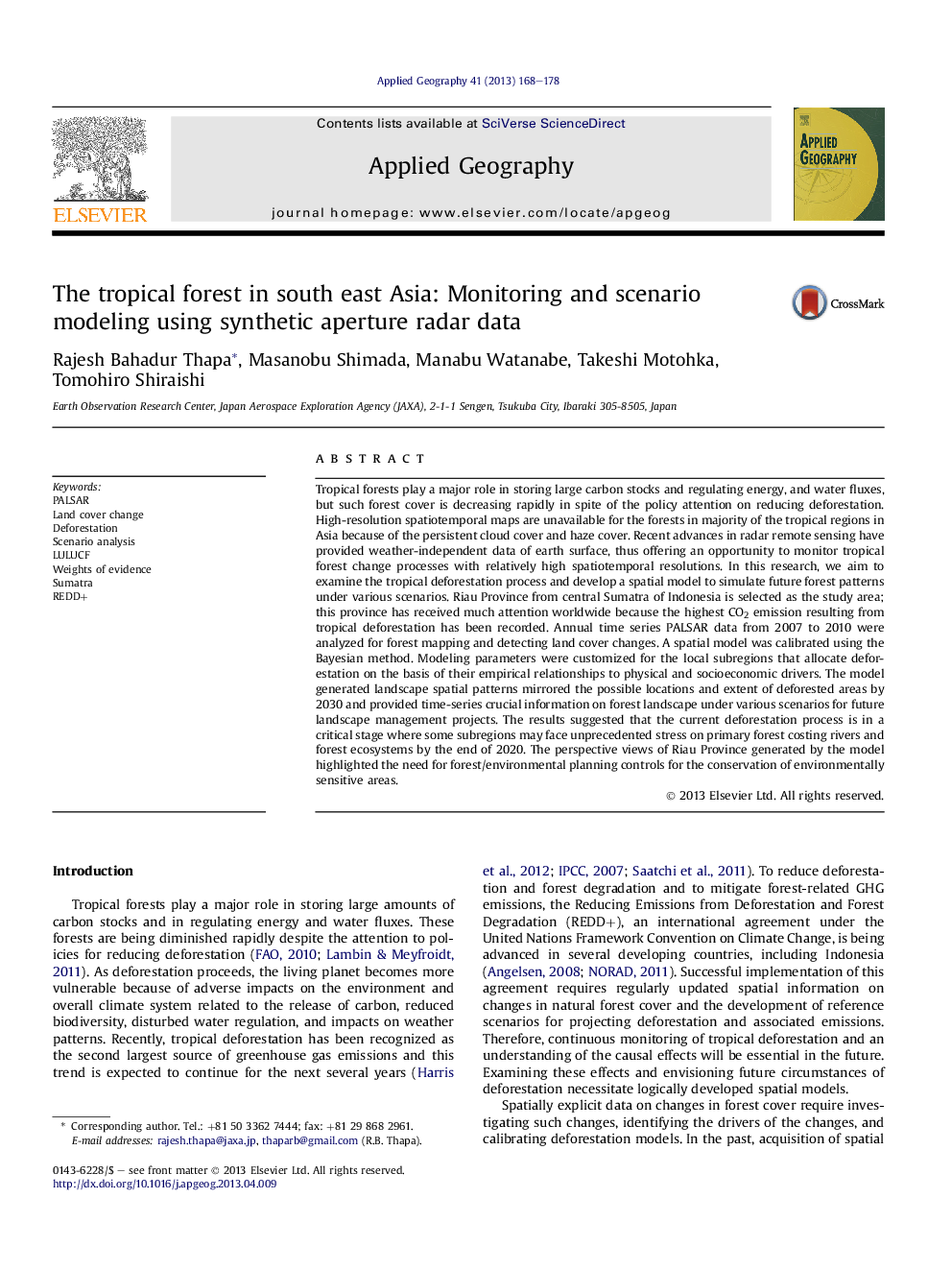| کد مقاله | کد نشریه | سال انتشار | مقاله انگلیسی | نسخه تمام متن |
|---|---|---|---|---|
| 83255 | 158710 | 2013 | 11 صفحه PDF | دانلود رایگان |

• We analyzed time series forest change in Riau province, Sumatra using SAR data.
• A spatial model is developed to predict the time-series deforestation patterns by 2030.
• Future landscape patterns at sub-region level are examined by multiple scenarios.
• Much of the primary forest will disappear by 2030 if the current process continues.
• It compliments important insights to decision makers for REDD+ preparedness activities.
Tropical forests play a major role in storing large carbon stocks and regulating energy, and water fluxes, but such forest cover is decreasing rapidly in spite of the policy attention on reducing deforestation. High-resolution spatiotemporal maps are unavailable for the forests in majority of the tropical regions in Asia because of the persistent cloud cover and haze cover. Recent advances in radar remote sensing have provided weather-independent data of earth surface, thus offering an opportunity to monitor tropical forest change processes with relatively high spatiotemporal resolutions. In this research, we aim to examine the tropical deforestation process and develop a spatial model to simulate future forest patterns under various scenarios. Riau Province from central Sumatra of Indonesia is selected as the study area; this province has received much attention worldwide because the highest CO2 emission resulting from tropical deforestation has been recorded. Annual time series PALSAR data from 2007 to 2010 were analyzed for forest mapping and detecting land cover changes. A spatial model was calibrated using the Bayesian method. Modeling parameters were customized for the local subregions that allocate deforestation on the basis of their empirical relationships to physical and socioeconomic drivers. The model generated landscape spatial patterns mirrored the possible locations and extent of deforested areas by 2030 and provided time-series crucial information on forest landscape under various scenarios for future landscape management projects. The results suggested that the current deforestation process is in a critical stage where some subregions may face unprecedented stress on primary forest costing rivers and forest ecosystems by the end of 2020. The perspective views of Riau Province generated by the model highlighted the need for forest/environmental planning controls for the conservation of environmentally sensitive areas.
Journal: Applied Geography - Volume 41, July 2013, Pages 168–178